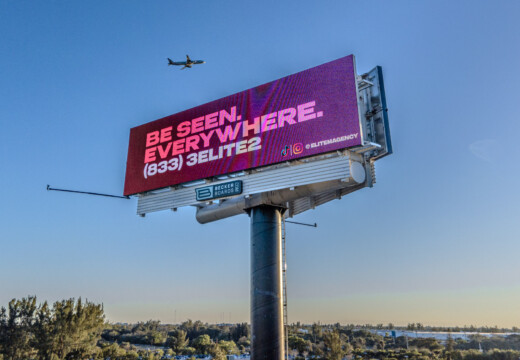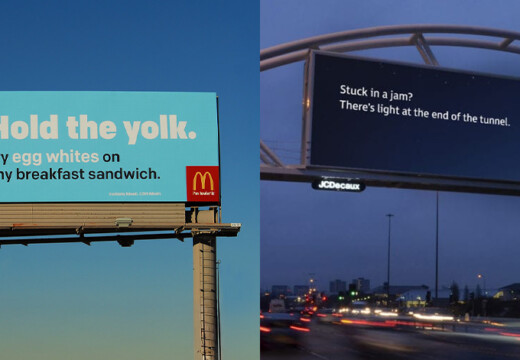Audience segmentation in out-of-home (OOH) advertising helps you target the right people with the right message at the right time. By breaking down your audience into groups based on demographics, habits, and location patterns, you can make your campaigns more precise and effective.
Key Benefits of Audience Segmentation:
- Targeted Placement: Ads appear where your audience spends time.
- Message Relevance: Tailor content to resonate with specific groups.
- Efficient Budget Use: Focus resources on high-impact areas.
Steps to Segment Audiences for OOH:
- Define Your Audience: Use data like age, income, and behaviors to understand who you’re targeting.
- Map Movement Patterns: Identify where your audience goes during the day (e.g., commutes, shopping areas).
- Divide Into Groups: Segment by demographics (age, income, location) and habits (lifestyle, shopping preferences).
- Match Media Types: Pair audience groups with the right billboard types (e.g., static vs. digital).
- Use Technology: Platforms like Blip provide tools for real-time targeting, location selection, and performance tracking.
Tools That Help:
- Blip: Lets you choose locations, schedule ads, and monitor performance with budgets starting at $20/day.
- Location Data: Pinpoints high-traffic areas and audience movement patterns.
By combining data insights, strategic placement, and real-time adjustments, you can create OOH campaigns that are more effective and get better results.
Enhance Your Display Ad with Audience Segmentation
Step 1: Define Your Target Audience
Start by clearly identifying who you want to reach using modern tools and data.
Gather Audience Data
Begin with reliable data. Collect basic details like age, income, and occupation. Then, dive deeper into behavioral patterns such as shopping habits, entertainment choices, and daily routines.
Use tools like social media analytics, mobile location data, purchase history, and survey results to get a clearer picture of your audience. Platforms like Beeyond’s TrueReach can analyze multiple factors at once, offering detailed insights to guide your campaign planning.
Once you’ve defined your audience, figure out where they spend their time to ensure your ads are placed in the right spots.
Map Location Patterns
Understanding your audience’s daily movements can help you choose the best locations for out-of-home (OOH) ads. Location data can highlight busy areas and specific places your audience frequents.
Here are some key time periods and focus areas to consider:
| Time Period | Focus | Goal |
|---|---|---|
| Morning Commute | Major traffic routes | Reach professionals during peak hours |
| Midday | Lunch spots and shopping areas | Target casual shoppers and browsers |
| Evening Rush | Entertainment districts | Connect with those heading out for leisure |
| Weekends | Parks and recreational areas | Engage with families and weekend crowds |
For the best results, combine broad data about general movement patterns with detailed insights about specific locations. While macro data shows trends across cities or regions, micro data pinpoints exact spots where your audience gathers.
Tools like Blip make it easier to select locations using detailed movement data. These insights help you align your ads with the right audience and set the foundation for choosing the best media types.
Step 2: Break Down Audience Groups
Using the data you’ve gathered and mapped, take it a step further by dividing your audience into specific groups. This allows for more focused and effective OOH (Out-Of-Home) advertising.
Sort by Demographics
Start by segmenting your audience based on key demographic traits that impact how they see and respond to ads. Here’s a quick breakdown:
| Demographic Factor | Segmentation Criteria | OOH Targeting Focus |
|---|---|---|
| Age Groups | Gen Z (18-24), Millennials (25-40), Gen X (41-56) | Place ads in areas popular with each age group |
| Income Levels | Low, Middle, High-income areas | Choose billboard spots that match spending habits |
| Geographic Zones | Urban centers, Suburban areas, Business districts | Target neighborhoods with specific characteristics |
| Commute Patterns | Public transit users, Highway drivers, Pedestrians | Pick ad formats suited for different travel modes |
Mixing these demographic details can give you a clearer picture. For example, combining age and income with location data can reveal the best places to reach your audience. Once you’ve mapped out these groups, dig deeper by looking at their habits and interests.
Group by Habits and Interests
Demographics are just the starting point. To create campaigns that really connect, take a closer look at behavior and lifestyle.
Here are some areas to focus on:
- Daily Routines: Understand their movements between work, shopping, and leisure.
- Lifestyle Choices: Highlight activities they enjoy, like fitness classes or local events.
- Shopping Behaviors: Track where and when they shop most often.
- Entertainment Preferences: Identify their favorite venues and leisure activities.
Using tools like Blip, you can pinpoint ad placements based on these behaviors. Think about how different groups interact with outdoor media. For instance, urban digital displays might work best for some, while others respond more to traditional billboards on busy highways.
sbb-itb-2e2e93f
Step 3: Match Media Types to Audience Segments
Once you’ve defined your audience groups, the next step is to pair each segment with the most suitable media type.
Select ad formats that align with how each segment behaves and where they spend their time.
Static vs. Digital Billboards
Here’s how different billboard types stack up for targeting:
| Billboard Type | Targeting Capabilities | Best For Audience Types |
|---|---|---|
| Static Billboards | Fixed, long-term visibility | Building awareness in areas with steady traffic |
| Digital Billboards | Rotating, time-specific messages | Reaching audiences with varied schedules |
| Highway Displays | High visibility and longer viewing time | Commuters on regular routes |
| Urban Screens | Rapidly changing content | Attracting young professionals and foot traffic |
Digital billboards let you tailor messages to specific times of day – like breakfast ads in the morning and nightlife promotions in the evening.
Select Billboard Locations
Once you’ve chosen the type of billboard, the next step is to focus on where your audience is most likely to see it.
Pick locations that align with your audience’s habits. Keep these factors in mind when deciding:
| Location Factor | Targeting Consideration | Impact on Reach |
|---|---|---|
| Traffic Patterns | Common commute routes | 71% of people notice roadside billboard messages |
| Points of Interest | Close to relevant venues | Adds contextual relevance to your message |
| Visibility Factors | Clear sightlines and proper viewing distance | Boosts message retention |
| Area Demographics | Matches your target audience | Ensures better audience alignment |
For example, if you’re targeting young professionals, placing digital billboards near office hubs or popular lunch spots can increase engagement during work hours.
Tools like Blip can help you analyze data to choose prime locations and adjust your campaign for better performance.
Step 4: Use Technology for Segmentation
Once you’ve chosen your billboard locations, technology can help fine-tune your audience targeting with precision.
Modern tools allow for more accurate audience segmentation and the ability to tweak campaigns in real time.
Blip Platform Features

Digital billboard platforms make precise targeting possible without requiring large budgets. For example, Blip’s self-serve platform offers tools designed to zero in on specific audiences:
| Feature | Benefit | How It Helps Targeting |
|---|---|---|
| Interactive Marketplace | Choose locations based on impression data | Focus on areas with your target demographics |
| Real-time Bidding | Adjust pricing every 10 minutes | Allocate budget efficiently across audience segments |
| Flexible Scheduling | Customize display times and dayparting | Align ad timing with audience behavior |
| Performance Analytics | Monitor campaign metrics | Refine targeting using actual performance data |
Blip’s platform lets businesses start with budgets as low as $20 per day. This pay-per-play model ensures you’re only paying when your ad reaches your audience. These features make advanced targeting accessible to businesses of all sizes and set the stage for ongoing improvements, which we’ll explore in the next part: tracking and optimizing with data.
Track and Adjust with Data
To get the most out of your campaigns, use modern analytics to track performance and fine-tune your segmentation:
| Metric Type | What to Monitor | How to Apply It |
|---|---|---|
| Audience Reach | Impressions and traffic patterns | Reassess billboard locations for better exposure |
| Engagement Timing | Peak viewing hours and daypart success | Adjust schedules to match audience habits |
| Geographic Response | Performance by location | Shift budget to top-performing areas |
| Campaign Impact | Website traffic and sales lift | Redefine audience segments based on results |
Combine multiple data sources for deeper insights:
- Location intelligence tools to map audience movements
- Traffic counters to measure exposure rates
- CRM data to link billboard exposure with customer actions
- Mobile device data to analyze audience behaviors
These insights let you adapt your strategy in real time. For example, if morning commuters engage more with your ads, allocate more budget to those hours and scale back during less effective times. This kind of flexibility ensures your campaign stays efficient and impactful.
Steps to Better Audience Targeting
To improve your OOH campaign’s audience targeting, focus on combining data insights with smart execution. The key lies in understanding your audience and using the right tools to connect with them effectively.
Modern OOH targeting involves these core elements:
| Targeting Element | Implementation Strategy | Impact on Campaign Success |
|---|---|---|
| Data Integration | Use geographic, demographic, and behavioral data together | Creates detailed audience profiles |
| Location Intelligence | Analyze movement patterns and high-traffic areas | Ensures optimal ad placement |
| Technology Adoption | Leverage digital platforms for real-time campaign management | Allows dynamic adjustments |
| Performance Tracking | Monitor key metrics and tweak targeting as needed | Encourages ongoing improvements |
Digital platforms have revolutionized OOH advertising, breaking down traditional budget constraints. Tools like Blip let businesses of all sizes manage campaigns in real time, making advanced targeting more accessible than ever.
Pro Tip: Combine various data sources to get a full picture of your audience. Traffic patterns, mobile data, and CRM insights all contribute to understanding your audience’s habits and preferences.
The future of OOH targeting is all about blending traditional demographic insights with real-time behavioral data. Modern tools make it possible to create campaigns that hit the right audience at the perfect time and place.
Audience targeting is not a one-and-done process – it’s iterative. Start by defining your audience clearly, apply the technology at your disposal, and adjust based on performance data. This approach ensures your OOH campaigns achieve the best possible results and a strong return on investment.
FAQs
Measuring the success of your billboard campaign is all about using the right tools and metrics.
How to measure billboard reach?
Tracking billboard reach involves gathering data from various sources and analyzing it for actionable insights.
| Measurement Method | Data Source | Key Insights |
|---|---|---|
| Impression Tracking | Traffic counters, GPS data | Estimates of potential views |
| Audience Studies | Demographics, behavior analysis | Viewer profiles and behavior |
| Location Analytics | Geographic data, movement patterns | Popular viewing times and locations |
| Campaign Performance | Unique URLs, QR codes | Direct engagement tracking |
For example, traffic counters help gauge how many people pass by your billboard, while GPS and geolocation data can reveal movement trends in the area. Adding unique elements like QR codes or custom URLs allows you to directly track responses from your campaign.
Digital billboards often come with built-in analytics tools, like those offered by platforms such as Blip, which provide real-time data to monitor and adjust campaign performance.
However, challenges remain – such as differentiating between casual glances and engaged viewers or linking billboard exposure to actual sales. By combining multiple tracking methods, you can create a more complete view of your campaign’s effectiveness.
Pro Tip: Use location data to identify high-traffic zones and peak times. This helps you maximize the impact of your billboard placement and fine-tune your strategy.


